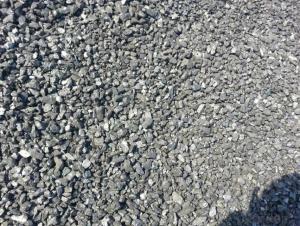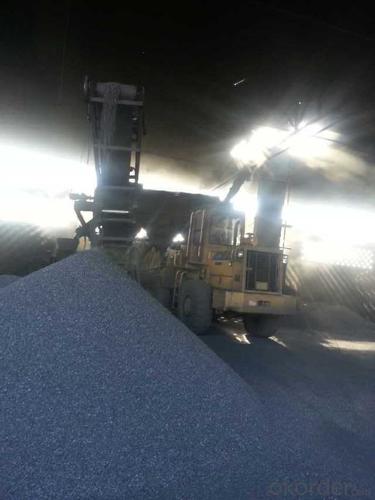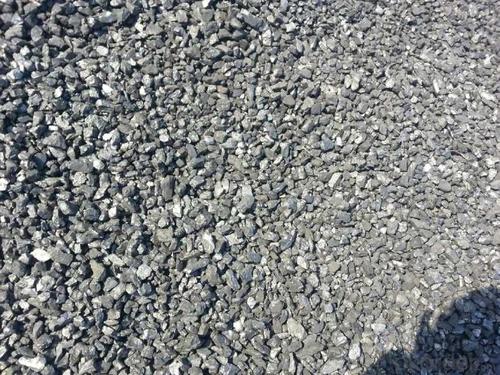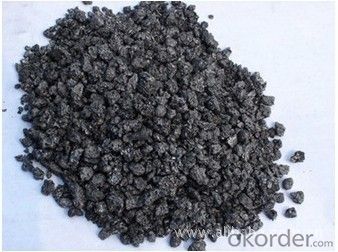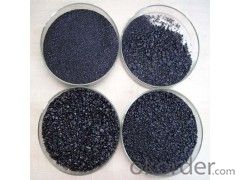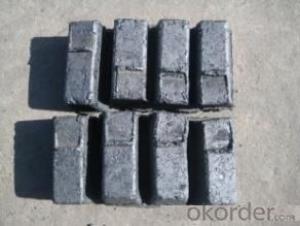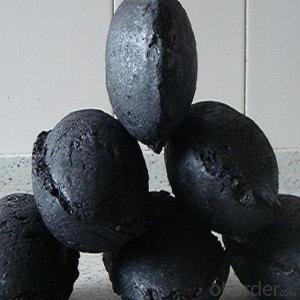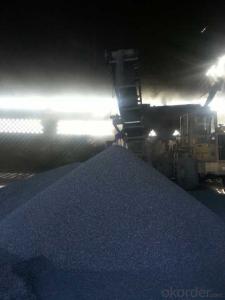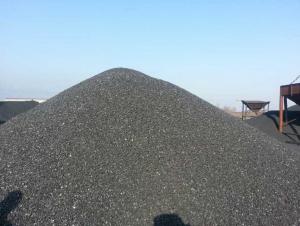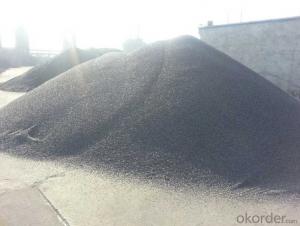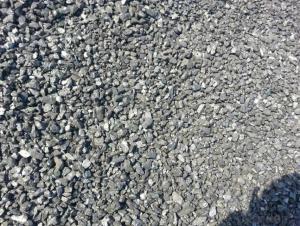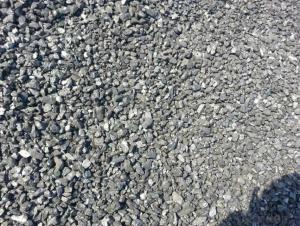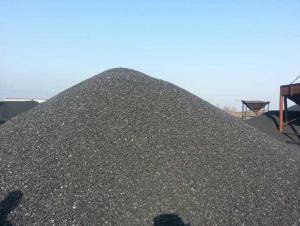Injection Carbon FC90-95 with Good and Stable Quality
- Loading Port:
- Tianjin
- Payment Terms:
- TT OR LC
- Min Order Qty:
- 20 m.t.
- Supply Capability:
- 5000 m.t./month
OKorder Service Pledge
OKorder Financial Service
You Might Also Like
Packaging & Delivery
Injection Carbon FC90-95 with Good and Stable Quality
25kgs/50kgs/1ton per bag or as buyer's request
Specifications
Injection Carbon FC90-95 with Good and Stable Quality
Calcined Anthracite
Fixed carbon: 90%-95%
S: 0.5% max
Size: 0-3. 3-5.3-15 or as request
Advantage and competitive of caclined anthracite:
Injection Carbon FC90-95 with Good and Stable Quality
1. strong supply capability
2. fast transportation
3. lower and reasonable price for your reference
4.low sulphur, low ash
5.fixed carbon:95% -90%
6..sulphur:lower than 0.3%
General Specification of Calcined Anthracite:
Injection Carbon FC90-95 with Good and Stable Quality
| FC | 95 | 94 | 93 | 92 | 90 |
| ASH | 4 | 5 | 6 | 6.5 | 8.5 |
| V.M. | 1 | 1 | 1 | 1.5 | 1.5 |
| S | 0.3 | 0.3 | 0.3 | 0.35 | 0.35 |
| MOISTURE | 0.5 | 0.5 | 0.5 | 0.5 | 0.5 |
Pictures
Injection Carbon FC90-95 with Good and Stable Quality

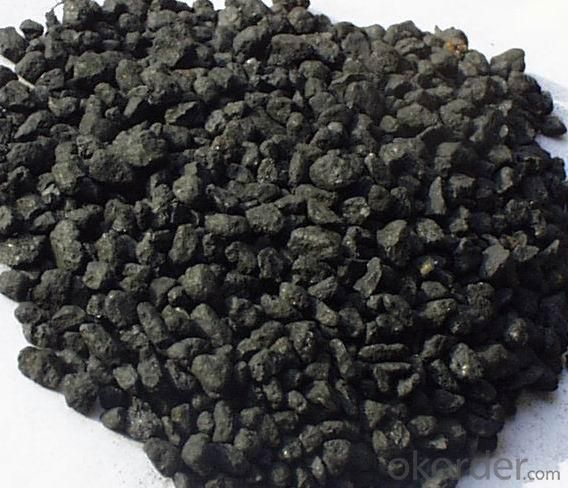
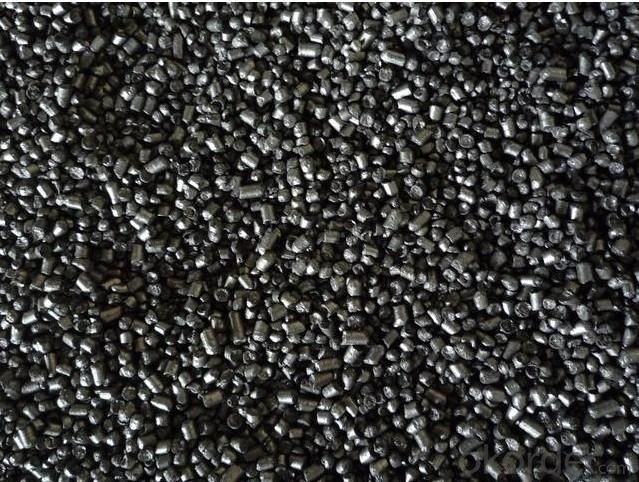
FAQ:
Injection Carbon FC90-95 with Good and Stable Quality
What can we do?
1.High quality and competitive price.
2.Timely delivery.
3.If any item you like. Please contact us.
Your sincere inquiries are typically answered within 24 hours.
- Q: What is carbon fixation in biology?
- Carbon fixation in biology refers to the process by which carbon dioxide (CO2) from the atmosphere is converted into organic compounds by living organisms. It is a crucial step in the global carbon cycle and is primarily carried out by autotrophic organisms, such as plants, algae, and certain bacteria. During carbon fixation, the enzyme RuBisCO (ribulose-1,5-bisphosphate carboxylase/oxygenase) catalyzes the reaction between CO2 and a five-carbon sugar molecule called ribulose bisphosphate (RuBP). This reaction produces two molecules of a three-carbon compound called 3-phosphoglycerate (3-PGA). This initial step is known as the Calvin cycle or C3 photosynthesis. In plants, the 3-PGA molecules are then converted into other organic compounds, such as sugars, starches, and cellulose, through a series of enzymatic reactions. These organic compounds serve as building blocks for the plant's growth and development. Carbon fixation plays a critical role in maintaining a balance of atmospheric CO2 levels and is a key process in regulating climate change. It allows for the transfer of carbon from the atmosphere into the biosphere, ultimately reducing the concentration of greenhouse gases and mitigating the effects of global warming. Moreover, carbon fixation is essential for sustaining life on Earth as it provides the basis for food chains and supports the growth of other organisms. Heterotrophs, including animals and humans, depend on the organic compounds produced by autotrophs through carbon fixation for their energy and nutritional needs. Overall, carbon fixation is a fundamental process in biology that enables the conversion of atmospheric carbon dioxide into organic compounds, sustaining life and helping to regulate the Earth's climate.
- Q: Iron and steel are different in terms of carbon content
- Stainless steel is usually divided according to the structure of the organization, can be divided into austenite, ferrite, martensite and other major categories. If you go into the molten steel of different proportion of Cr Ni austenitic steel, tempered magnet is not stainless steel; if the chromium nickel steel and a small amount to in (or without nickel), tempered steel is a magnet on the stainless steel, also called ferritic stainless steel; martensitic stainless steel alloy the element is chromium, iron and carbon. Stainless steel because of the different alloy content, there are more than 100 kinds. In addition to the austenitic stainless steel magnet not on ferrite and martensitic stainless steel are magnetic. Nickel is scarce in the world and expensive. Therefore, the high nickel content of stainless steel in the market price is higher, but the magnet still can not suck. In fact, there is also a stainless steel magnet can not be sucked.
- Q: Why can carbon fiber in addition to static electricity ah?
- Carbon fiber is a conductive substance, static electricity can not accumulate. Therefore, in the production of cloth, some of the anti - static agent, processing clothes can be anti-static. People who work at gas stations must pass on antistatic clothing so that electrical sparks from static electricity do not explode.
- Q: How do you remove car carbon?
- 3, running high speed can flush carbon deposition? Running high speed, you can really use the airflow on the airway erosion, wash away part of the carbon deposition. So, if you happen to go out, there are high-speed, national road two choices, you may choose to pull back to speed. But, Ma director thinks, if be in order to "flush carbon deposit" specially, want to run high speed, do not have this necessity. "It is a waste of time, and the cost of oil, extra high speed tolls, the effect is better to do a maintenance 4S shop!" 4, improve the shift speed, such as the original speed 2000rpm shift, modified 2500rpm conversion, generated can prevent carbon deposition, but also to protect the engine? Ma director said, low speed the shift, is often said that the "drag block", the car is easy to knock, the combustion of gasoline is not sufficient to carbon deposition. But it's not necessary for people to increase gear speed - that will increase fuel consumption and cause premature wear of clutch friction plates. So, manual transmission of the car, 1.6 ~ 2.0L displacement, about 2000 rpm shift is more economical, and no need to improve; and automatic car, pay attention not to slam the gas.
- Q: Carbon content of fly ash and fly ash roasted vector what is the relationship?
- The higher the carbon content, the greater the adsorption, the lower the activity index.In the process of coal ash processing, there are still many places to use the fly ash mill. The carbon content of fly ash is related to the boiler property and combustion technology. China's newly built modern power plant, the content of fly ash can be reduced to l% ~ 2%, and some power plants may also be as high as 20%.
- Q: What is the impact of carbon emissions on agriculture?
- Carbon emissions have a significant impact on agriculture as they contribute to climate change, leading to adverse effects on crop yields, soil fertility, and water availability. Increased levels of carbon dioxide in the atmosphere can enhance photosynthesis to some extent, but this positive effect is often offset by rising temperatures, altered precipitation patterns, and increased frequency of extreme weather events. These changes disrupt traditional growing seasons, promote the spread of pests and diseases, and reduce food production. Additionally, carbon emissions also contribute to air pollution, which can further harm plants, livestock, and human health. Therefore, reducing carbon emissions and adopting sustainable agricultural practices are crucial to mitigate these negative impacts and ensure food security for future generations.
- Q: What is the relationship between carbon emissions and deforestation?
- The close connection between carbon emissions and deforestation cannot be overstated. Deforestation involves the permanent removal of trees and vegetation in forests, often to clear space for agriculture, urbanization, or logging. This activity releases vast amounts of carbon dioxide (CO2) into the atmosphere, contributing to greenhouse gas emissions and ultimately, climate change. Trees play a vital role in mitigating climate change as they absorb CO2 from the atmosphere through photosynthesis and store it within their tissues. When forests are cleared, this ability to store carbon is lost, and the previously stored carbon is released back into the atmosphere. It is estimated that deforestation is responsible for roughly 10% of global greenhouse gas emissions. Moreover, the burning of forests, a common practice during deforestation, further adds to carbon emissions. When trees are burned, the carbon they have stored is released as CO2, intensifying the greenhouse effect. This is especially significant in tropical regions like the Amazon rainforest, where deforestation is rampant. On the flip side, reducing deforestation and promoting reforestation can help alleviate carbon emissions. By conserving existing forests and planting new trees, we can enhance carbon sequestration and lessen the amount of CO2 in the atmosphere. Forest conservation and restoration initiatives are essential elements of global climate change strategies, as they not only combat climate change but also safeguard biodiversity and provide crucial ecosystem services. In conclusion, the connection between carbon emissions and deforestation is evident: deforestation leads to increased carbon emissions, while efforts to conserve and restore forests help decrease CO2 levels in the atmosphere. It is imperative to prioritize sustainable land-use practices and lend support to initiatives that safeguard and revive forests to effectively mitigate climate change.
- Q: How does carbon affect the properties of steel?
- Carbon is a crucial element in the production of steel and plays a significant role in determining its properties. The amount of carbon present in steel has a direct impact on its hardness, strength, and overall performance. By adding carbon to iron, the base metal of steel, it becomes significantly stronger and more durable. This is because the carbon atoms are able to occupy the spaces between iron atoms, preventing the metal from sliding or deforming easily. The higher the carbon content, the harder and stronger the steel becomes. Moreover, carbon also influences the steel's ability to be heat treated and its response to various manufacturing processes. When steel is heated and rapidly cooled, a process known as quenching, the presence of carbon allows for the formation of harder and more brittle structures, such as martensite. On the other hand, lower carbon content allows for the formation of softer and more ductile structures. In addition to its impact on strength and hardness, carbon also affects the steel's corrosion resistance. Higher carbon content can lead to reduced corrosion resistance, making the steel more susceptible to rust and other forms of degradation. This is why stainless steel, which contains a higher amount of chromium and low carbon content, is often chosen for applications where corrosion resistance is crucial. To summarize, carbon greatly influences the properties of steel. It enhances its strength and hardness, allows for heat treatment and response to manufacturing processes, and affects its corrosion resistance. The careful control of carbon content in steel is vital in order to achieve the desired properties for specific applications.
- Q: How does carbon affect the fertility of soil?
- Carbon is essential for maintaining and enhancing soil fertility. It provides a food source for soil microorganisms, promotes nutrient availability, and improves soil structure, water holding capacity, and overall soil health. Additionally, carbon helps increase the capacity of soil to retain and release nutrients, creating a favorable environment for plant growth and enhancing soil fertility.
- Q: The main difference between steel and iron is the difference in carbon content
- The essential difference between steel and iron is that there is a difference in carbon content.1, steel, is a carbon content, mass percentage of 0.02% to 2.04% between the ferroalloy. The chemical composition of steel can have great changes, only the carbon steel is called carbon steel (carbon steel) or ordinary steel; in actual production, steel tend to use different with different alloy elements, such as manganese, nickel, vanadium and so on;2 iron is a chemical element. Its chemical symbol is Fe. It has an atomic number of 26. It is the most common metal. It is a kind of transition metal. A metal element with a second highest crustal content.Extension of knowledge point:Iron into pig iron and wrought iron. Wrought iron, steel and cast iron is an alloy of iron and carbon with the carbon content difference. Generally less than 0.2% carbon content that wrought iron or iron, the content of 0.2-1.7% in the steel, is iron content of more than 1.7%. Soft wrought iron, good plasticity, easy deformation, strength and hardness were lower, not widely used; iron carbon, hard and brittle, almost no plastic; steel pig iron and wrought iron with two kinds of advantages, widely used for human.
Send your message to us
Injection Carbon FC90-95 with Good and Stable Quality
- Loading Port:
- Tianjin
- Payment Terms:
- TT OR LC
- Min Order Qty:
- 20 m.t.
- Supply Capability:
- 5000 m.t./month
OKorder Service Pledge
OKorder Financial Service
Similar products
Hot products
Hot Searches

